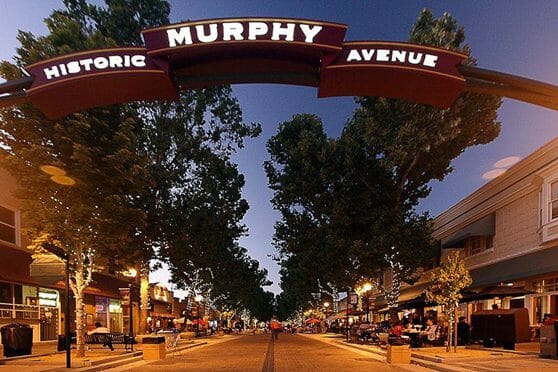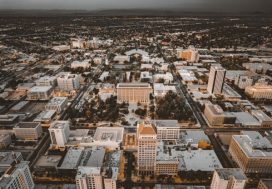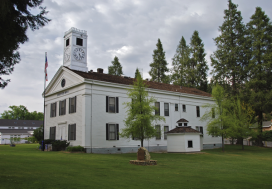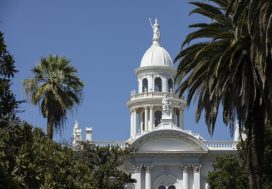The area that is now Sunnyvale, California was once inhabited by the Ohlone Native Americans, according to Wikipedia. The Spanish first arrived in the area in the 1770s. By 1777, the Franciscan missionary Padre Junipero Serra had founded the Mission Santa Clara, which is located in the site that is now very close to San Jose’s International Airport.
Sunnyvale’s First Inhabitants: the Ohlone
The Ohlone and their way of life were greatly impacted by the arrival of the Spanish. Sadly, many died from new diseases brought by the Spanish, including smallpox and measles. Still some who survived converted to the Christian faith, becoming more assimilated into the new culture.
Early Agriculture
By the 1800s, Spanish settlers had planted figs, pears, grapes, and grain in the fertile land that is now Sunnyvale and Mountain View in the Santa Clara Valley. The Spanish also grazed sheep and cattle. They called the area “la pastoria de las borregas” or the “lambs’ pasture.”
In 1842, the Spanish government granted a large, 9,066-acre piece of land to Francisco Estrada and his wife Inez Castro. This parcel became Rancho Pastoría de las Borregas. Today, portions of this original land grant are what we now know as Sunnyvale and Mountain View.
In 1844, the Spanish government issued another land grant. However, this grant was unusual because it was given to a Native American. Lupe Yñigo was one of only a few Native Americans to hold a land grant at that time. Lupe’s land eventually became Rancho Posolmi, a name that honored the Ohlone people who once inhabited the area.
In 1850, another settler by the name of Martin Murphy Jr. bought a portion of Rancho Pastoria de las Borregas for $12,500.
Murphy had the very first wood frame house in Santa Clara County – he had it shipped all the way from across the country in New England. Murphy establishes a working ranch and wheat farm on the land. While Murphy’s original wood house was destroyed in the 1960s, it was later reconstructed and became the Sunnyvale Heritage Park Museum.
A railroad line from San Francisco to San Jose was established in 1860, which helped to drive more commerce to the area.
By the 1870s, more fruit orchards had been planted, replacing the wheat farms because they were more economical. The invention of refrigerated rail cars expanded the produce market, as it enabled more fruit to be transported to other cities. Fruit orchards were so prevalent in the region at the time that the San Jose Board of Trade would call Santa Clara County the “Garden of the World.”
In 1871, Dr. James M. Dawson and his wife Eloise established the first fruit cannery in Santa Clara County. This led to fruit agriculture and canning becoming one of the biggest industries in the county at that time.
New Immigrants
The 1880s saw an influx of workers from China to the region.The Chinese were followed by immigrants from Italy, Portugal, the Azores, and Japan in the 1890s. These early immigrants worked in the local fruit orchards.
Sunnyvale’s first school was formed in 1897. At that time, the town of Sunnyvale was called Murphy and the school was called Encina School.
The Town of Sunnyvale
By 1901, the town of Murphy changed its name to Sunnyvale. Residents decided to call it Sunnyvale because of it its sharp contrast with the foggy towns around the Bay Area. It wasn’t until 1912 that local residents voted to incorporate, and Sunnyvale became an official city.
In 1906, a Chicago meat-packing company, Libby, McNeill & Libby, opened its first fruit-packing factory in Sunnyvale.
Also in 1906, the first non-agricultural business was established in Sunnyvale. After the San Francisco earthquake, Joshua Hendy Iron Works relocated to Sunnyvale because the organization’s building was destroyed in the fires from the earthquake.
Sunnyvale got its first high school in 1923 and its first mayor in 1924. Mayor Edwina Benner was the second female mayor in the history of the state of California.
Congress established a military base in Sunnyvale in 1930. This base would eventually become Moffett Naval Air Station, and then Moffett Field.
Sunnyvale as a Technology Mecca
It was during World War II that the first glimpses of Sunnyvale as a technology mecca were seen. The Joshua Hendy Iron Works began building marine steam engines and then rocket launchers and naval guns.
As the technology and defense industry expanded in the area, a shortage of agricultural workers ensued. Thurs, a new wave of immigrants from Mexico came to Sunnyvale to fill the gap.
By 1956, Lockheed, the aircraft manufacturer, moved its headquarters from southern California in Van Nuys to Sunnyvale. Soon afterwards, more technology-focused companies established offices in the area.
Since then, numerous high-tech companies have established headquarters or offices in Sunnyvale, including Google, Advanced Micro Devices, Yahoo/Verizon, Apple, and others.
Sunnyvale Today
Today, Sunnyvale has a diverse population of over 150,000 residents. Residents of Sunnyvale come from a variety of ethnic groups, including White (43.0%), Asian (40.9%), Hispanic or Latino (18.9%), African American (2.0%), Native American (0.5%), Pacific Islander (0.5%), and other ethnic groups or a combination of different ethnic groups.
Over 80,000 people are now employed in Sunnyvale, and the median income is over $118,000. With a median home price of nearly $1.7 million, Sunnyvale is a far different place than the land of fruit orchards is was just 150 years ago.





